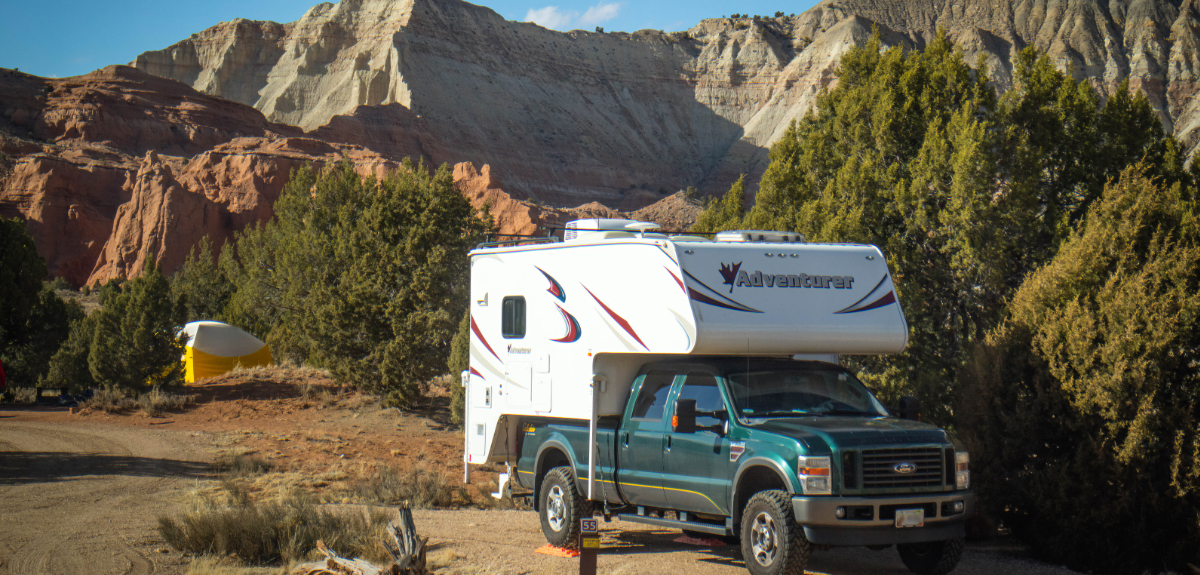Many years ago, I converted a vintage 1961 Chevrolet Suburban 4WD for camping, with curtains, a fold-up bunk along one wall which could double as seating, a portable sink and washbasin and a propane stove with folding stand. I used a tarp connected to the roof rack for a canopy and put wide oversize tires on it, and used it extensively all over the country. It was my introduction to the boondocking basics.
Some of my favorite memories revolve around nights camped just above the surf line (just don’t underestimate how high the water comes up on high tide), in places where ocean beach camping was allowed. The cool fresh air and sound of the waves breaking are better than anything to lull one to sleep. I enjoyed the simplicity of this life more than all the expensive rigs I used later on.
Dispersed camping—bunking down in the wild, away from organized campgrounds—can provide exactly this kind of quiet relaxation and low-cost nature experience. You don’t have to build out your own rig. But to prepare properly, you do have to plan for self-sufficiency, safety and minimizing environmental impact.

Photo Credit: Cheri Alguire/Getty
Research your route, and be prepared for unexpected weather changes. Look into road conditions, fuel stops and campsites. Check for any late-breaking detours or road closures, forest fires, flooding or other changes. Sēkr is a website and an app that helps you find dispersed campsites, with emphasis on van life. Campnado is another site geared to identifying dispersed camping sites everywhere in the United States. And, just a humble note, Wildsam published our picks for stand-out dispersed destinations in just about every state last autumn; find that story on wildsam.com.
Prior to traveling on private lands, obtain written permission from the landowner. When traveling on public lands, check for jurisdiction, such as Bureau of Land Management, U.S. Forest Service or state or national parks. Obtain official maps and permits, follow all regulations and pay any required fees. Be aware that cell service may be limited or nonexistent in remote areas, so download offline maps and carry paper maps and a compass or portable GPS as a backup. Consider having a satellite phone or emergency SOS beacon. If possible, when visiting remote areas, use the buddy system and travel with another vehicle. Let a responsible party know your route and itinerary, and check in periodically.
Make a checklist and refer to it before starting out. Perform all recommended scheduled maintenance, and do a thorough inspection of your vehicle, checking tires and inflation, brakes, suspension, heating and air conditioning, electrical, lighting, and freshwater, gray-water and black-water systems. Make sure your propane and freshwater tanks are full, and wastewater has been dumped.
Photo Credit: welcomia/Getty
Bring the vehicle owner’s manual, registration, insurance card and driver’s license. Take essential supplies, fire starters, extra fuel, food and water. Carry a breakdown kit with jumper cables, tow strap, a tire-repair kit, small air compressor, along with the right tools. Make
sure you have a jack, lug wrench, wheel chocks, wooden blocks, and a spare tire(s) for tow vehicles and trailers. Safety items should include a first-aid kit, fire extinguishers, a whistle, signaling mirror, warning triangles and flashlights. Carry leveling blocks, a dump hose, fresh-water hose, extension cord, electrical adapters and surge protector. To run the air conditioner, you’ll need a generator (bring fuel and consider noise) or solar panels to recharge batteries.
Bring everything you need because there are no amenities in remote areas. Extra water can be carried in sturdy water containers. Pack cookware, utensils, and durable plates, cups and glasses. Plan all meals and bring enough food, including non-perishable items, drinks and snacks.
Check weather forecasts often, and avoid camping in low areas or washes that can suddenly become flooded. Pack accordingly, with clothing and footwear for all conditions, including rain gear and layers. Bring bedding, pillows and camp chairs. Don’t forget a toiletry kit, medicines, insect repellent, sunscreen, hair needs and device chargers. You will need a 12-volt DC charger or a small 120-Volt AC output inverter to power device chargers.
Photo Credit: welcomia/Getty
Use existing roads, set up camp on an existing site, minimize your impact, and carry out all trash. Bring firewood if allowed, be aware of fire restrictions and have appropriate equipment, including a shovel and fire extinguishers. Be aware of wildlife and avoid attracting them to your campsite. If you’re in bear country, store your food in bear-proof containers; bears can rip a vehicle apart. Carry bear spray and other defensive protection as allowed by law. Leave no trace.
This article originally appeared in Wildsam magazine. For more Wildsam content, sign up for our newsletter.
The post Going Remote — Boondocking Basics appeared first on RV.com.